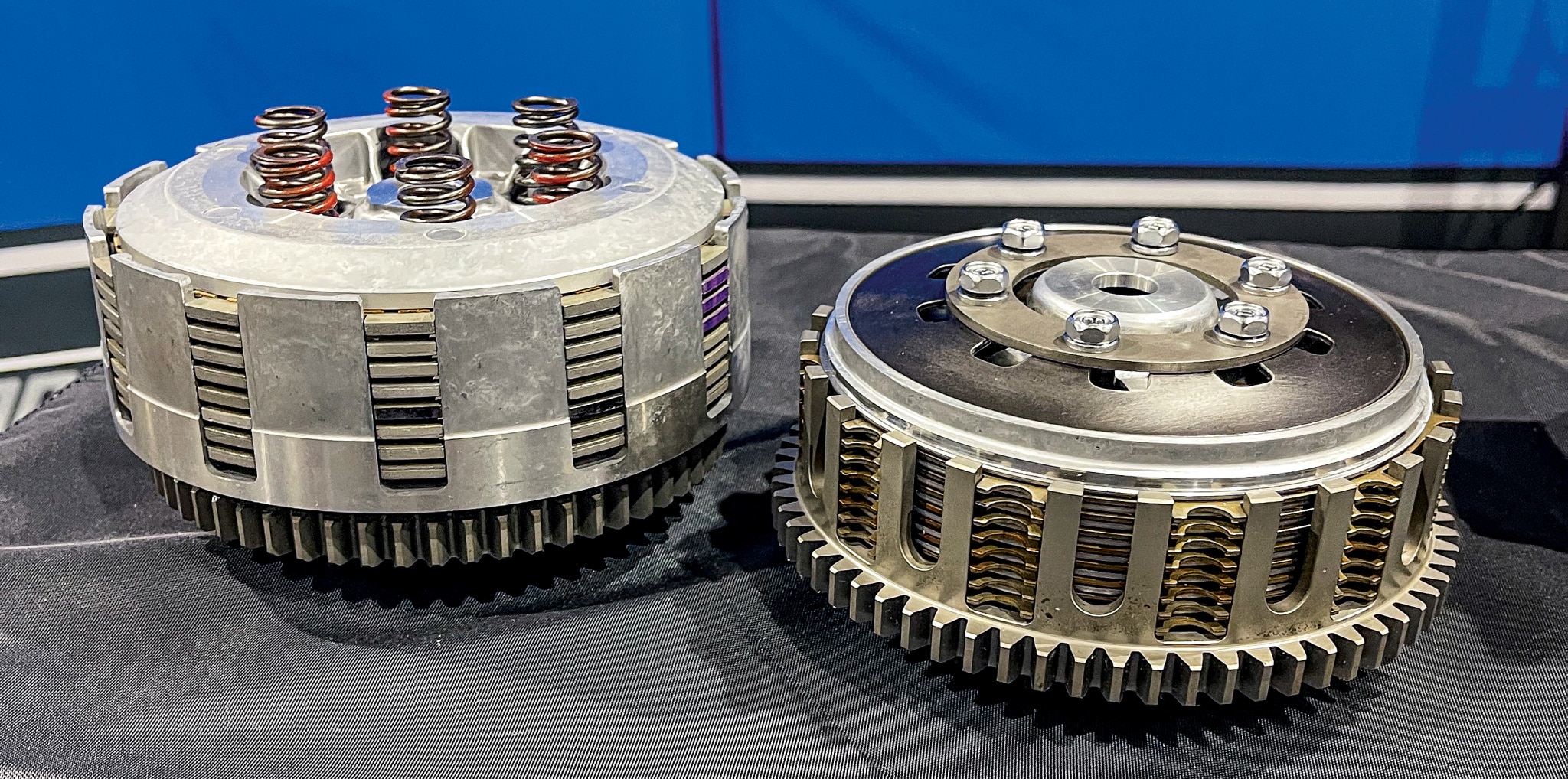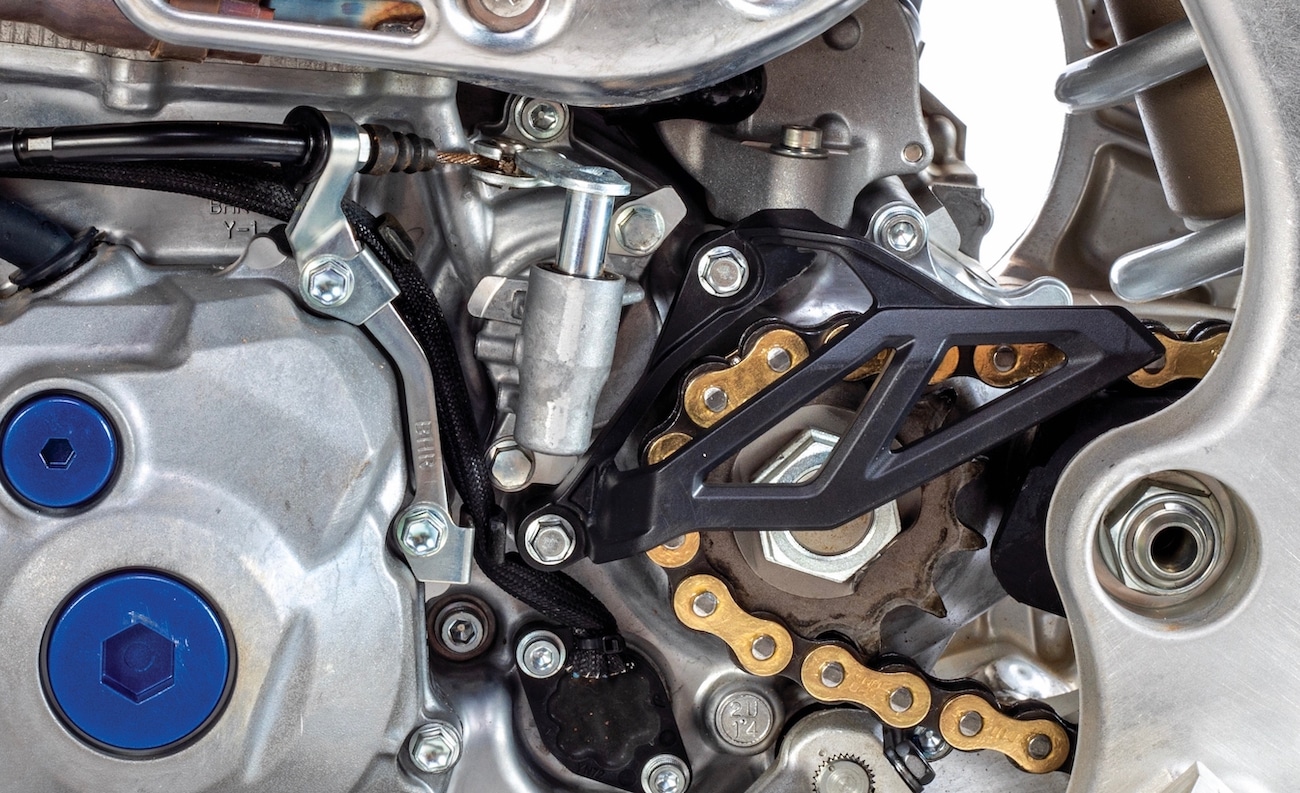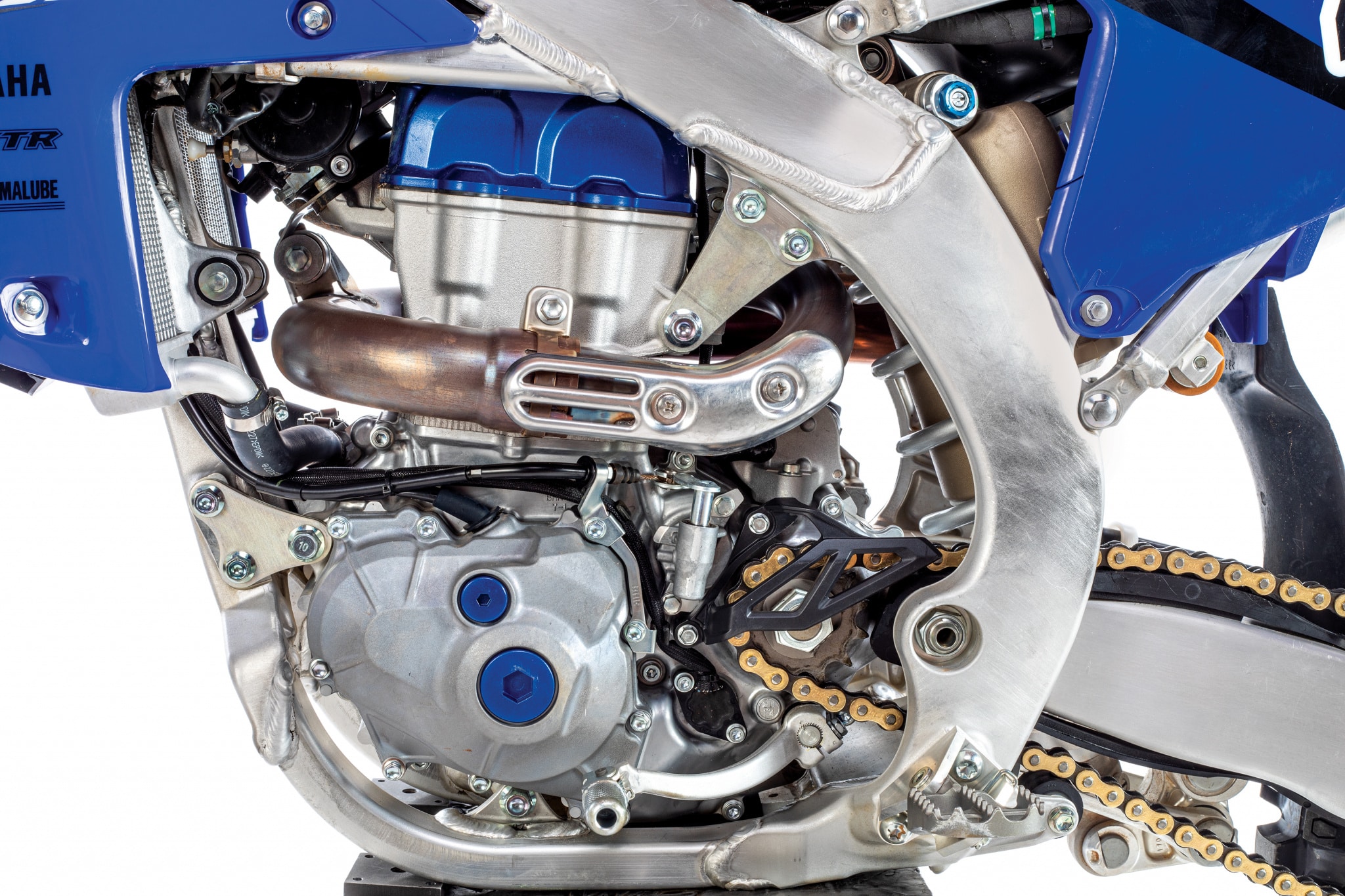TEN THINGS ABOUT THE 2023 YAMAHA YZ450F’S NEW CLUTCH

(1) Concept. The change from 2022’s aluminum clutch basket with a primary gear that is riveted on to a one-piece steel basket/primary gear combo for 2023 helped Yamaha drop weight, reduce overall size and increase durability. To create a smoother engagement, they replaced the six coil springs with a Belleville washer spring.
(2) Clutch. The clutch serves an important role in the motorcycle, as it takes energy that’s been generated in the combustion chamber and connects/disconnects it to the transmission. The inner hub and the basket both ride on the same axis of the transmission; however, they aren’t connected. When the clutch is disengaged, the basket rotates based on the speed of the crankshaft, and the inner hub rotates on the speed of the rear wheel. Force from the inner pressure plate’s springs on to the clutch’s fiber and steel plates are what actually connects the rotating inner hub and outer basket to drive the rear wheel.
(3) History. Yamaha is stubborn. When KTM, Honda and Kawasaki switched to air forks, Yamaha stayed with its Kayaba SSS spring forks. It was a smart move by Yamaha. When critics, like MXA, complained about the backward-facing engine, they stood firm. When KTM went to hydraulic clutches and were joined by Husqvarna, GasGas and eventually Honda and Kawasaki, Yamaha stuck with cable actuation. Now, with the new 2023 YZ450F, Yamaha has not just gone hydraulic, but adopted KTM’s steel clutch basket (with the primary gear machined into the back of the basket) and jumped on the Belleville washer bandwagon. Yamaha is the third Japanese manufacturer brand to follow in KTM’s footsteps, but beat Honda and Kawasaki to the punch on the steel upgrade.
(4) Proven tech. The 2022 and prior-model YZ450F clutch baskets were made out of aluminum, with the steel primary gear riveted onto the basket. Aluminum isn’t as strong as steel, which meant that the aluminum basket had to be bigger than the new steel basket. The steel basket concept has been used on KTMs since 2012, and it has been so successful that even the factory KTM/Husky/GasGas race teams use the stock clutch baskets. Hinson and Rekluse offer CNC-machined aluminum clutch baskets for Honda, Kawasaki, Suzuki and Yamaha, but not for KTM, Husky or GasGas. Now, Hinson and Rekluse have lost another potential customer for clutch baskets—the 2023 Yamaha YZ450F owner.
(5) Weight. Yamaha claims they’ve dropped 5.3 pounds on the 2023 YZ450F, and the new engine is largely responsible for the diet. Although steel is heavier than aluminum, Yamaha was able to make the primary gear part of the basket and thus they managed to use less steel to the point that the clutch ended up weighing 1.6 pounds less.
(6) Size. Because the primary gear and basket are now machined as one piece, the clutch pack is 12.7mm narrower. The clutch cover has also been brought in closer to the engine by 8.5mm, and the diameter of the entire clutch pack is 1.6mm smaller.
(7) Durability. Over time, the constant banging between the clutch plates and the basket’s tangs can create notches. Once developed, these notches make it harder for the clutch plates to release and engage inside the basket. The major benefit of a steel clutch basket is that it won’t notch like an aluminum basket.
(8) Belleville washer. Instead of six different coil springs, the Belleville washer (known by several different proprietary names) is a large, cupped washer that adds spring pressure as it is compressed. A Belleville washer’s clutch pull offers a feel that is contrary to that of a coil spring clutch. The Belleville washer spring starts stiff and gets easier as you pull it, while a coil spring starts easy and gets stiffer as you pull it. Kawasaki first added the Belleville washer spring on the 2020 KX450, but they didn’t add the CNC-machined steel clutch basket/primary gear. Most MXA test riders feel that Yamaha didn’t go stiff enough on the “Slip Torque” pressure of their 2023 Belleville washer, resulting the the YZ450F clutch going soft after a few laps of hard use. No surprise in this, because KTM stiffened their Belleville washer several times since its introduction trying to find the proper spring rate.
 This is the old school cable mechanism that comes stock on the 2023 YZ450. Cable play is adjusted by turning the wheel on the clutch lever.
This is the old school cable mechanism that comes stock on the 2023 YZ450. Cable play is adjusted by turning the wheel on the clutch lever.
(9) Rotating mass. When it comes to handling, your dirt bike’s engine plays a bigger role than you think. The best way to think about rotating mass is to study a spinning top. The heavier the top, the harder it is to tip over once in motion. Similarly, heavier rotating mass in an engine will cause the bike to want to stand up straight and not stay leaned over in ruts. Since the new YZ450F clutch is smaller and lighter, it (along with other changes) this helps the YZ450F handle better.
 The GYTR YZ450F hydraulic clutch kit. It self adjusts and does not need to be fiddled with mid-race.
The GYTR YZ450F hydraulic clutch kit. It self adjusts and does not need to be fiddled with mid-race.
(10) Aftermarket. New for 2023, Yamaha is offering a bolt-on hydraulic clutch kit for its YZ450F. It would have made sense for Yamaha to make it standard on the 2023 production model, but they like to point to the fact that Eli Tomac has been very adamant about keeping the cable clutch. Eli had lots of clutch issues during his time at Kawasaki with their cable-operated clutches. Yamaha decided to give consumers the option of adding hydraulics with a GYTR hydraulic clutch bolt-on, which should retail at around $300. We would have preferred that the 2023 YZ450F came with the hydraulic clutch lever/master cylinder/slave unit as OEM equipment and gave Eli the option of adding a cable-actuated kit.







Comments are closed.